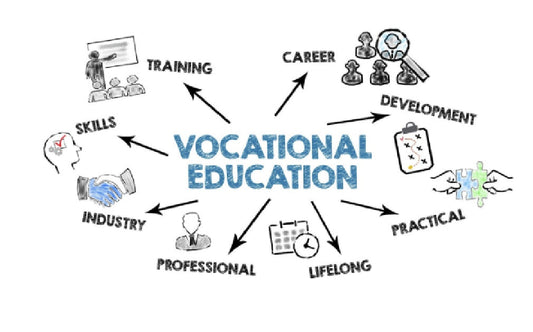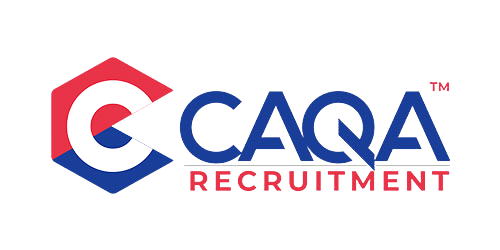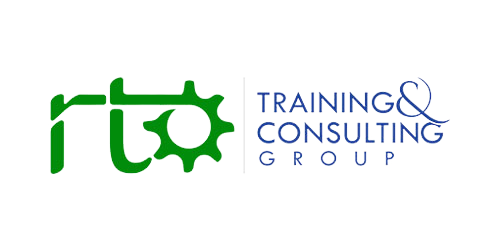Why this year feels different for RTOs
If you lead or advise a Registered Training Organisation, you can feel the ground moving. The rules that shape your people, your programs and your partnerships are not changing at the margins; they are shifting at the core. In the space of months, workplace relations has been rewritten to include a right to disconnect for small employers, casual work has been recast on what staff actually do rather than what contracts say, English testing settings for international students have been reset, migration powers have been toughened, a new rights based aged care regime has a confirmed start date, climate disclosures have gone from optional to obligatory for larger entities, and merger control is moving to a mandatory model that will redefine sector consolidation. None of this is theoretical for the VET sector. It reaches into rosters and response times, trainer contracts and industrial instruments, CRICOS admissions and visa risk, aged care curricula and assessment, workshop design and environmental approvals, and the way acquisitions are planned and priced. The providers who treat this as an administrative chore will spend the next eighteen months in reactive mode. The ones that use compliance as a design constraint for better operations will protect their reputation, reduce audit friction and win confidence from industry clients who need certainty as much as skills. The evidence is clear and the dates are locked in, so let us work through what has changed, what it means, and what good looks like in practice for an RTO in 2025.
Employment rules that change how RTOs schedule, supervise and support staff
From 26 August 2024, the right to disconnect applied to employers with 15 or more staff. From 26 August 2025, it applies to small businesses as well. That means trainers, assessors and administrators in small RTOs can lawfully refuse to monitor, read or respond to work contact outside their agreed hours unless that refusal is unreasonable, with the onus on employers to show why after-hours contact was warranted. The Fair Work Ombudsman and the national tribunal have both published guidance that confirms these start dates and their effect. This is not a soft obligation or a policy vibe; it is a workplace right that can be enforced. For RTOs that rely on evening classes, weekend intensives, late-night learner support and interstate delivery windows, the scheduling and remuneration model now matters as much as the timetable. If after-hours responsiveness is essential, that needs to be formalised, consulted on and compensated rather than assumed. The same applies to teams supporting international students across time zones, where what feels routine can easily stray outside a trainer’s span of hours.
Casual employment has changed in ways that go beyond templates. Since 26 August 2024, the definition of a casual looks to the real substance and practical reality of the relationship, not merely the contract wording. The new employee choice pathway allows eligible casuals to notify their employer that they want to convert to permanent employment. That pathway commenced for most employers on 26 February 2025, and for small business employers, it aligns with 26 August 2025. In practice, that means RTOs that have historically staffed delivery with long-term sessional trainers who work regular, predictable patterns will need to make informed decisions on conversion requests, keep the mandatory information statements current, and evidence why any refusal meets the statutory tests. This intersects with VET-specific obligations around vocational currency and TAE requirements, because once employees convert, different industrial rules and professional development expectations can apply across an entire calendar of delivery. The risk is not just legal exposure. It is also rostering fragility if conversion requests are mishandled during peak enrolment periods.
Migration amendments and English testing shifts that reshape CRICOS risk
Parliament has passed migration amendments that expand executive powers over visas and removals, including provisions that validate certain earlier decisions and streamline removal in specified circumstances. Legal and higher education sectors have raised concerns about procedural fairness, and while limited review mechanisms still exist in defined cases, the operational reality for providers is simple. Risk increases when a student’s immigration status can change quickly. Admissions, welfare and attendance monitoring now need to work as a coordinated system rather than separate compliance silos. The reputational risk from sudden removals is not confined to one learner; it can echo across a market or a region. These are not abstract concerns. National outlets have reported on the passage of the legislation, the new powers and the immediate reaction from the education sector.
On 7 August 2025, the government recognised additional English language tests and adjusted acceptance settings. The Department of Home Affairs guidance confirms the change date and lists current pathways and tests, while sector briefings note that some options, including the C1 Advanced, are no longer accepted for a number of routes. The operational consequence for CRICOS providers is immediate. Admissions collateral and conditional offers must be checked line by line. Automated workflows that predated the update need to be revalidated. Agents must be briefed to avoid avoidable refusals. The best practice response we are seeing among risk mature providers is a running register that maps each course and visa pathway to the accepted tests and the score bands now in force, with staff trained to escalate ambiguities rather than interpret in isolation.
Aged care’s rights-based reset and what it demands from training and assessment
The Aged Care Act 2024 commences on 1 November 2025. It embeds a rights-based approach, introduces a single assessment framework and lifts expectations on provider governance and workforce capability. The new Support at Home arrangements also commence on that date and consolidate home care programs into a model that centres on reablement, consumer choice and measurable outcomes. For RTOs that deliver Certificate III and IV in Individual Support and related skill sets, this is not a footnote. It requires deep revision of curricula, assessment evidence and workplace simulation. Rights, dignity and autonomy cannot be taught as content alone; they must be evidenced through scenario design, observation, reflection and documented judgment. The single assessment framework requires graduates who can read across disciplines, plan coherently and share information with clinical teams, not just complete a checklist. The home care funding changes require digital literacy and financial literacy because workers will operate within platforms, budgets and consumer-directed choices that have compliance and ethical edges. The Department has provided the commencement dates and program architecture. The translation into training quality is in the sector.
There is also urgency from workforce shortages that have not abated. Providers will be tempted to compress duration to meet demand. That would be a mistake. The regulator’s message in recent years has been clear. If delivery is unduly short, if assessment is not valid, if simulation does not match real work, the piece of paper will not protect you. For a sector that is moving to outcome-based regulation, graduating a learner who cannot meet rights-based expectations is a reputational and regulatory risk, not just a pedagogical one.
Environmental approvals, planning pathways and what they mean for workshops and labs
Environmental and planning reforms are moving at different speeds across jurisdictions, which is why a national provider needs a state-by-state map. In Queensland, the Nature Conservation and Other Legislation Amendment Act 2025 is due to commence on 2 October 2025. Among other things, it strengthens enforcement tools and streamlines some categories of environmental authorities, on paper, that can simplify approvals for low-risk educational facilities. In practice, whether a welding bay, a spray booth, a horticulture plot or an automotive workshop is low risk depends on emissions, chemical handling, noise and waste. Compliance notices are more enforceable, and the cost of guessing wrong has gone up.
In Western Australia, the policy push under Streamline WA and Approvals WA remains to reduce friction for major projects. That is an opportunity for RTO campus upgrades if proponents plan early and meet the technical standards that these pathways still require. Approval speed is only an advantage when design, safety, environmental and training standards are aligned from the first sketch. If you retrofit compliance, you lose the time you thought you saved. The safest national message to deliver to leaders is to build a planning matrix that assumes the strictest jurisdiction applies, then set local variance as a conscious decision with documented controls.
Climate disclosure is here for larger education groups and their partners
Mandatory climate-related financial disclosures commence for many large Australian entities for reporting periods starting 1 January 2025. That mandate arrives via the Treasury Laws Amendment package that is now law, supported by Australian Sustainability Reporting Standards. Not every RTO is captured. Many will sit well below the thresholds. But larger groups with multiple subsidiaries, university-backed providers, or training businesses that supply climate reporting clients will feel the pull of these rules in procurement, in grant eligibility and in partnership terms. The baseline operational change for captured entities is a sustainability report that describes climate risks, governance, strategy, metrics and targets, subject to phased-in assurance. The practical change for RTOs that want to be preferred suppliers is the ability to evidence emissions footprints for facilities and programs, and to show internal controls for environmental compliance.
For training organisations that run fabrication bays, engine rooms or high-energy simulations, this is a chance to align facility upgrades with both environmental approvals and future climate reporting expectations of your partners. Teaching students to work safely in a lab that also measures energy use, manages waste responsibly and reports it transparently is a teaching opportunity as well as a compliance obligation. It is also a signal to industry that your graduates learn in environments that mirror what modern employers now report.
Merger control is changing, and it will reshape VET consolidation plays
Until 31 December 2025, Australia remains in a voluntary merger notification regime. From 1 January 2026, the regime moves to mandatory notification with a public register and proactive assessment by the competition regulator. Treasury and the regulator have laid out the design and the direction. For VET boards and investors, this changes deal timing, confidentiality and certainty. Transactions that would once have been announced after completion will now appear on a public list while they are being assessed. Competitors will see your strategy. Students and staff will read about potential changes before you have integration plans ready to share. Thresholds will catch deals that many in the sector currently treat as routine. Cross-border acquisitions will add foreign investment screening on top of merger review. This shifts the value of due diligence from a commercial task to a regulatory one as well, with a larger emphasis on market definition by region and qualification. A roll-up of campuses that looks benign nationally can still be problematic if it concentrates market power in a single metropolitan area or a high-demand qualification stream.
In the voluntary window through the end of this year, expect a rush to sign. That is understandable, but it is not a reason to shortchange regulator-ready documentation. The same data room that will persuade an investor will now be read by a regulator. If your market share analysis is loose, your student impact modelling is thin, or your quality metrics are an afterthought, you are building delay into the process you are trying to accelerate.
Multi-jurisdictional complexity is the new normal, so design your system to the highest watermark.
Workplace relations changes have been national. Environmental and planning changes are not. Child-related employment and safety screening are state-based. Industrial relations in some states carry additional local requirements. The safest operating model for a national RTO is to design a unified compliance framework that meets the highest applicable standard, then use jurisdictional maps to document where you exceed local minima. A matrix that tracks who is covered, what the rule requires, which system captures the evidence and who signs off will often be simpler and safer than a patchwork of local exceptions that only one person understands. Several jurisdictions have published their own reforms and information sheets, which means your sources of truth are proliferating. Your internal system needs to make that proliferation manageable for frontline teams rather than something only compliance specialists can navigate.
What good practice looks like in an RTO under these rules
The providers that are coping best share common choices. They have rewritten trainer and assessor rosters to reflect contact windows that respect the right to disconnect, with on-call arrangements that are voluntary, time-bound and compensated. They have audited every casual engagement against the new statutory definition, mapped predictable patterns and prepared scripts and evidence packs for conversion conversations that will be triggered under the employee choice pathway. They have refreshed CRICOS admissions pages, tested workflows that validate English tests against the new acceptance list on the date the offer is issued, and trained staff to escalate any uncertainty to a central team that reads the primary guidance rather than social media summaries. They have begun the serious work of reauthoring their aged care materials and assessments to reflect rights, integrated assessment and Support at Home’s funding model, and they have built clinical and community partners into the redesign so that placement hosts see graduates who are prepared for the service model that begins in November.
They have engaged environmental consultants early for workshop refurbishments, checked whether their facilities fall into low-risk categories under the Queensland reforms or require fuller authorities, and documented the controls that sit behind those judgements. They have opened a conversation with their finance team and auditors about climate disclosures because even if the training entity is below the threshold, its parent group or its largest clients may not be, and that shifts expectations on data and diligence. They have adjusted deal timelines to reflect mandatory merger notification from 2026 and are rehearsing how they will communicate to staff and students during the public notification window. In other words, they are treating compliance as an operational design problem, not a legal footnote.
Managing the difficult intersections.
Two intersections deserve special attention. The first is where right to disconnect meets international student support. International learners who work to support themselves, navigate time zones, and face visa anxiety can generate after-hours demand. The legal rule now says you must manage that demand through documented, compensated support windows, not by hoping staff will simply absorb it. The human rule says that if your after-hours model is built on goodwill, you will burn that goodwill precisely when you most need it. The second is where migration settings meet academic and attendance monitoring. The migration amendments do not mean every removal is sudden or unreviewable, but they do raise the stakes for getting the basics right. When attendance data, academic progress and welfare flags are integrated, you can intervene early and document the support you provided. That protects the student and the provider if status changes arise.
There is also an intersection between aged care’s rights-based expectations and the long-standing problem of unduly short training. The November start date for the new Act is not a licence to rush learners through before the bar rises. Providers that compress programs now will graduate workers who are misaligned to the model that takes effect in weeks. That is not a strategy; it is a risk. Planning for genuine competence in this environment means writing scenarios that ask students to balance safety, autonomy and service limits, then assessing how they reason, communicate and escalate, not just whether they can recite procedures.
What to tell your board and your industry partners
Boards want to know what has changed and whether the organisation is safe. The most credible update is a simple narrative anchored to dates and to visible work. Explain that from August 2025, small business right to disconnect obligations apply to you if you sit under the headcount threshold, and show how rosters and service windows have been adjusted. Explain that since August 2024, casuals are defined by what they do, not just what was signed, and that conversion requests will be managed under the employee choice pathway with a record-keeping and response timetable that has been tested. Explain that admissions have been updated to reflect English test changes from 7 August 2025, that agent packs were refreshed, and that offers are validated against Department guidance at the point of issue. Explain that aged care programs are being rewritten for the 1 November 2025 start and that clinical partners have been involved in the build. Explain how environmental approvals are being handled in Queensland and how planning teams engage with Streamline WA for Western Australian works. Explain that the climate disclosure regime from 1 January 2025 affects your parent or your partners and that you are building the data discipline they will expect. Explain that from 1 January 2026, mergers will be notified publicly and that your playbook includes a staff and student communications plan for that window. Then show the board the single source of truth where each item is tracked to a regulatory citation, a system owner and an evidence bundle.
Industry partners want confidence that graduates will be safe, ready and reliable under the new rules. The most persuasive message is not a promise. It is a demonstration. Invite them to watch a reablement scenario under Support at Home and to review how your assessors make decisions. Walk them through your right to disconnect rostering so they understand how after-hours needs are met without burnout. Show how your English admissions checks match the current Home Affairs table. Share how your environmental controls work in a lab and how those controls are taught to students as part of the skill set. Explain how your internal due diligence mirrors the new merger regime, because an organisation that can keep its house in order while the rules change is one that can be trusted with a contract, a cohort and an outcome.
Where to be careful with the narrative
It is easy to overstate controversial elements of the migration amendments. The reforms have expanded executive powers and included retrospective validation in some areas, but limited reviews remain in defined circumstances. Be clear, be accurate and be measured when you brief students and agents. It is equally easy to assume environmental reform is a federal story when, in fact, your approvals and obligations live in state law with different terminology and timelines. Anchor your environmental messaging to the jurisdiction where your facility sits, then reference national guidance only where it truly applies. Finally, be wary of the idea that climate reporting is a matter only for listed entities. A large portion of your employer partners will be captured. If you supply them, they will ask you for data that supports their disclosures. Being ready is not only a compliance service to them. It is a commercial advantage for you.
The bottom line for VET leaders
The legislative pace in 2025 is not a passing storm. It is a climate shift for compliance. The right to disconnect requires careful workforce design, not just an HR memo. Casual conversion under the employee choice pathway requires records, judgment and respectful dialogue. Migration and English settings demand admissions discipline and joined-up student support. Aged care reform demands curriculum and assessment that are built around rights and integrated assessment rather than content lists. Environmental approvals and planning require early technical advice and documented controls. Climate disclosures require data maturity even if you are below the threshold. Merger reform requires the courage to plan in public. None of this is optional, and none of it needs to be feared. When we treat regulation as a boundary for better operations, we get cleaner schedules, clearer expectations, stronger partnerships and fewer audit shocks. That is how a provider stays compliant. It is also how a provider becomes trusted.
If you need a single action to start, build your cross-law register today. Put the rule, the date, the citation, the owner and the evidence in one place, and then use it to drive the operational choices described above. Compliance is not a department. It is how an RTO shows its learners, its staff and its industry that it can be relied on when the rules get harder, not just when they are easy. The rules have got harder. The organisations that commit now will be the ones still standing, still trusted and still preferred when this year’s changes have become next year’s normal.


































